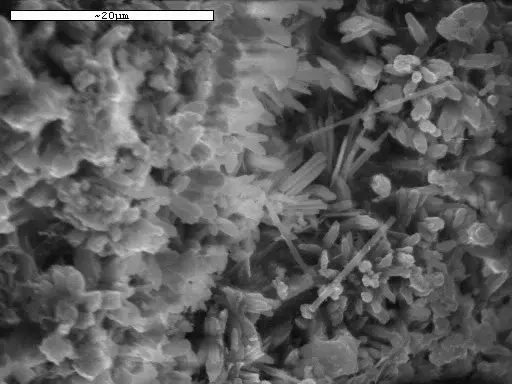
SEM image of cement clinker
by Konstantinos Kourtidis, Demokritus University of Thrace, Xanthi, Greece
The image shows a Scanning Electron Microscope (SEM) image of a cement clinker particle. The image was taken with a SEMQuant Scanning Electron Microscope at the Physics Department of Aristotle University Thessaloniki, Greece. In the manufacture of Portland cement, clinker is the solid material produced in the cement kiln stage by heating the rawmix in oxidising conditions to around 1400-1450°C, at which temperature partial melting (sintering) takes place, producing hard spherical nodules around 5-20 mm in diameter. These are rapidly cooled to preserve their reactive mineral constituents. The clinker is primarily composed of tricalcium silicate (alite), dicalcium silicate (belite), tricalcium aluminate (3CaO.Al2O3), and calcium aluminoferrite (2CaO.(Al,Fe)2O3). The major raw material for making clinker is usually limestone(CaCO3):
Categories
- Earth Magnetism & Rock Physics (352)
- Geochemistry, Mineralogy, Petrology & Volcanology (990)
- Laboratory (112)
Location
Tags
Colours
Image properties
512 × 384 px;
image/jpeg; 50.7 KB
Submitted on 27 August 2007
Licence
Creative Commons Attribution-NonCommercial-ShareAlike 3.0 Unported (CC BY-NC-SA 3.0)
Credit
Konstantinos Kourtidis (distributed via imaggeo.egu.eu)
Share
Appreciate
Report